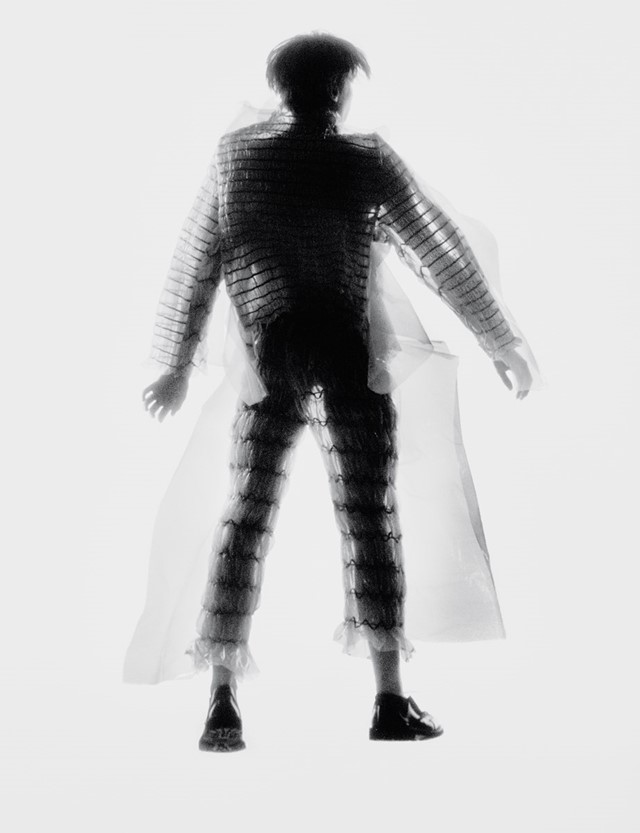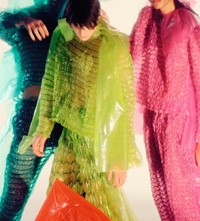Craig Green In His Own Poetic Words
- PhotographyDaniel Shea
- StylingRobbie Spencer
- TextAlexander Fury
Speaking to Alexander Fury, London’s menswear wonderboy turned unassuming global sensation retraces the sacred, profound and down-to-earth influences coursing through his collections
This article is taken from the Spring/Summer 2019 issue of Another Man:
“I like the notion of creating within restrictions. I think that’s why I like fashion because you have the restrictions of the body: the body never changes; the environmental aspects of gravity don’t change. So what can you do within that, what feels new? The ideas of freedom and restriction, chaos and control, are what the work is constantly about.
I’m very pragmatic in life, but I can be very superstitious. You make rules up for yourself. I’m constantly trying to link things – perhaps it’s a control-freak thing. I try to find some meaning in all my collections, or some system of looking at it. Usually it’s not until the show is done that we see the similarities. There’s always a uniformity, a rhythm, a similar emotion behind it. It’s about the way that it feels.
When I started, I didn’t know what my work was about. And season after season I would look back and think: maybe it is about uniform, maybe it is about workwear, maybe it is about religion. For me, afterwards, it’s always about stopping, and thinking why? Why did that feel right? No one asks us to look back, to analyse the collections, but it helps to make sense of it all. Which is kind of religious, in a sense – searching for meaning.
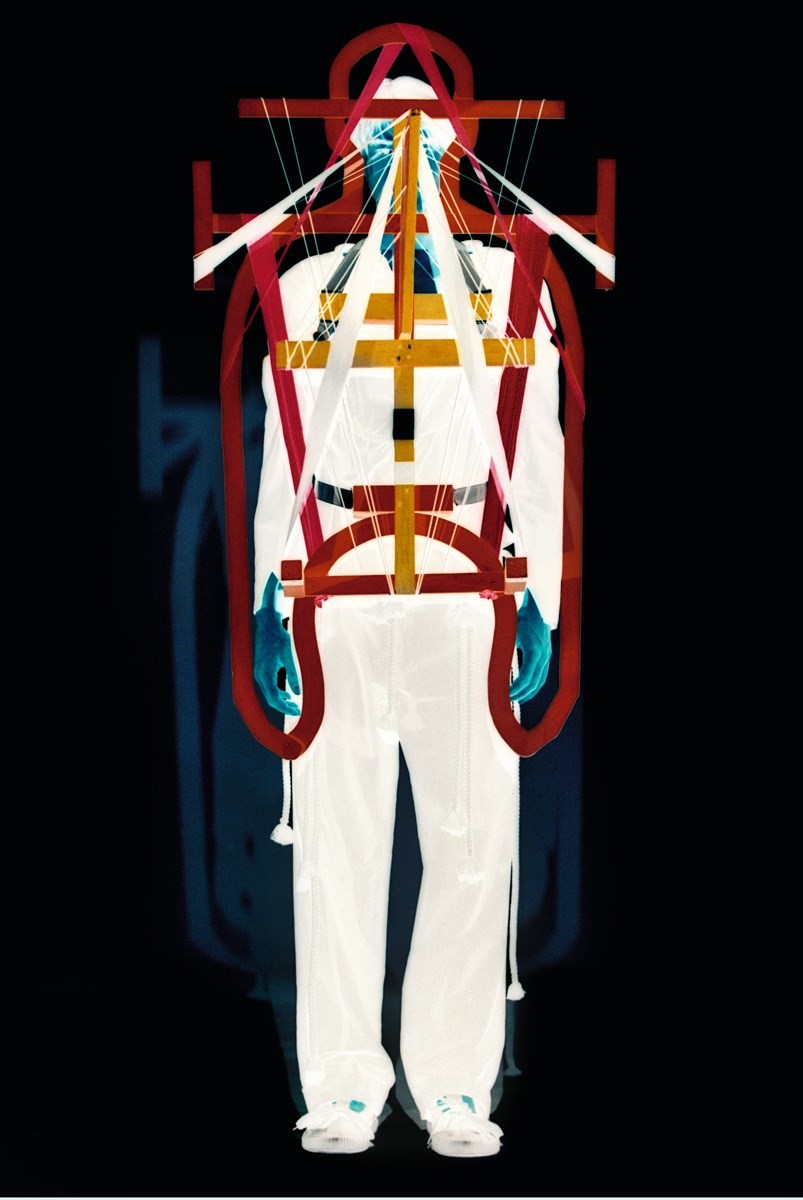
It does feel as if everything ends up looking religious, even if we start somewhere else. Take what we call the sacrificial picnic rugs, from the Autumn/Winter 2019 collection. It made so much sense for us to do a lumberjack, worker check, or a buffalo plaid. The pattern on the pieces started as a target, from a gun. Then they became more abstract, like mouths, or slashes. The pieces looked so good flat, like a haze around a body, a little like when they find dead bodies at a crime scene, and it leaves an imprint on the floor, burnt-through. And they looked like they were for some kind of ceremony.
My family weren’t religious but we’d go to church for Midnight Mass, special occasions. But in my wider family, there’s a diversity of religion. My uncle went to Israel, converted to Judaism and he would come for Hannukah. I was lucky growing up in Hendon, North London because, if I look at my friends when I was in primary school, two of them were Iranian, one was Indian, one was Greek. There were lots of cultures, mixes. I had lots of Jewish friends and I used to go to Shabbat dinners. Growing up around those religions was inspiring.
For my MA collection, I was looking at religion and workwear, and the similarities between them. I like that one is for physical function and one is for spiritual function but they both share the concept of being a group, belonging as a set of people and that what you wear has a meaning. The construction is very similar: simplicity, one size fits all – there’s a beauty in both of them.
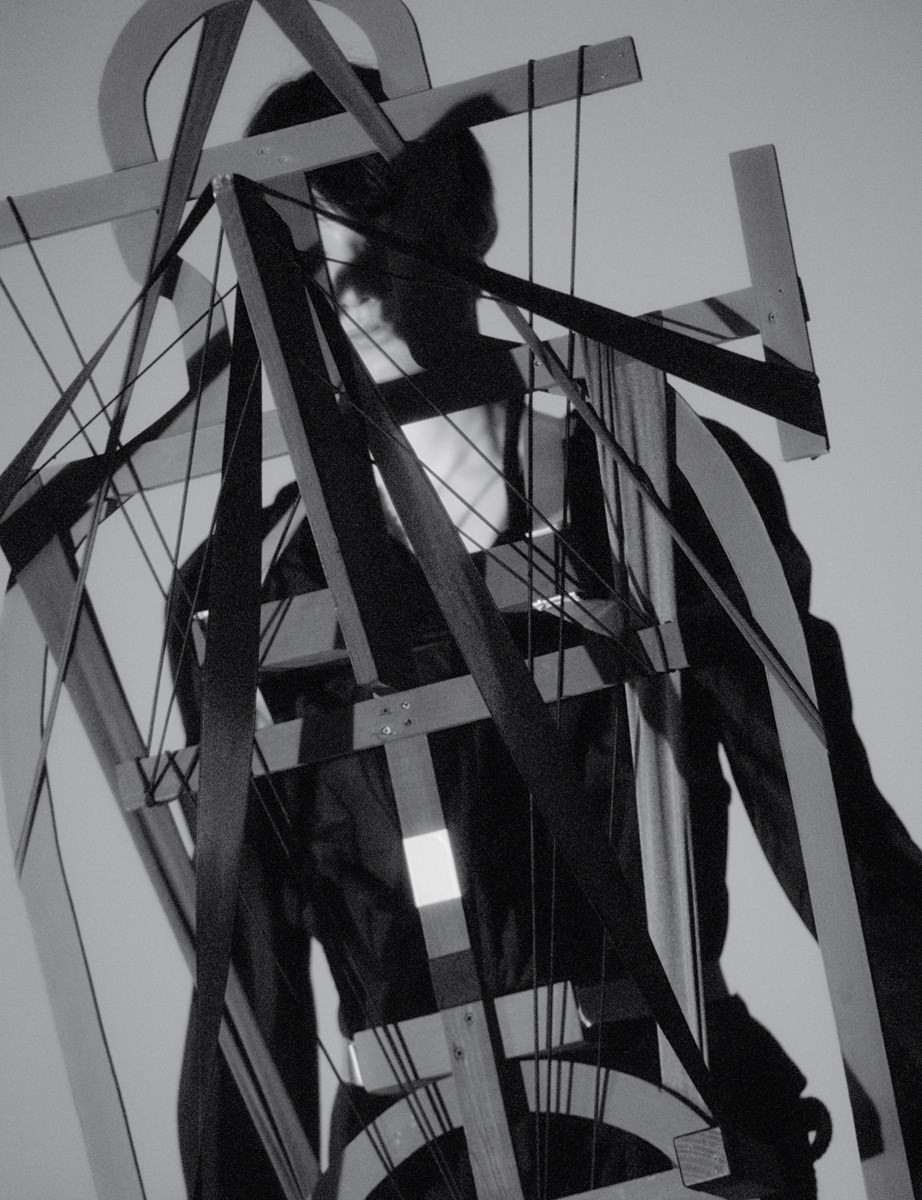

The campaigns we have produced, we now see them as elemental. So far we’ve examined water, air and fire. We have to do earth next. And I like playing with the idea of figures in a white space, which means it could be from any time, anywhere and any country. There’s no context, no background. It gives it a universality.
We tend to put things into threes, which is like the Holy Trinity. Our collections relate to each other, as a triptych. For instance, we had the paradise collection for Spring/Summer 2018, which was looking for happiness in something that doesn’t exist, something synthetic, like body modification: moulding yourself into your perfect form, seeking perfection.
That was the present, and next, for Autumn/Winter 2018, we focused on the past, where we had folded uniforms and organza tents. It was about time. And that related to the latex sculptures, the totems – though we didn’t realise it until Tim Blanks came backstage and asked if we used latex because it was perishable?
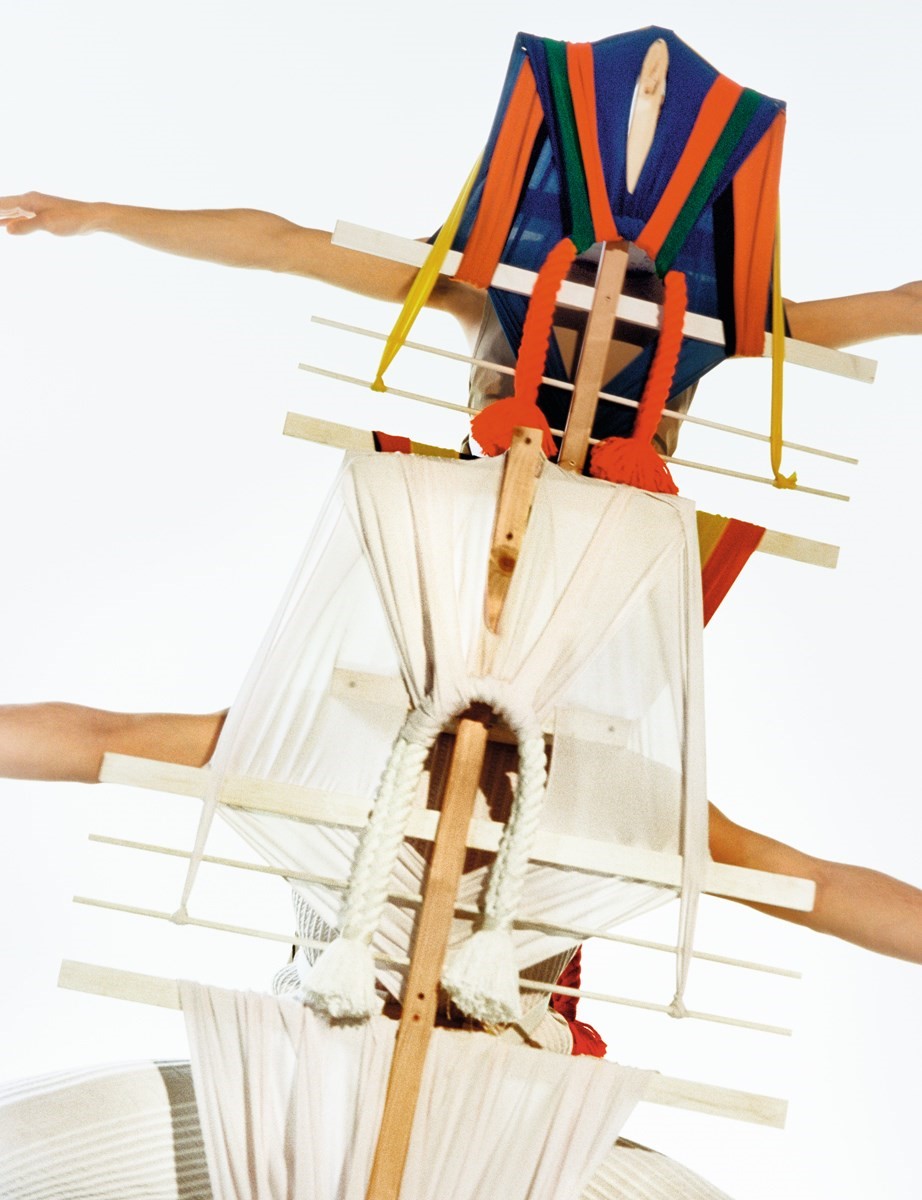
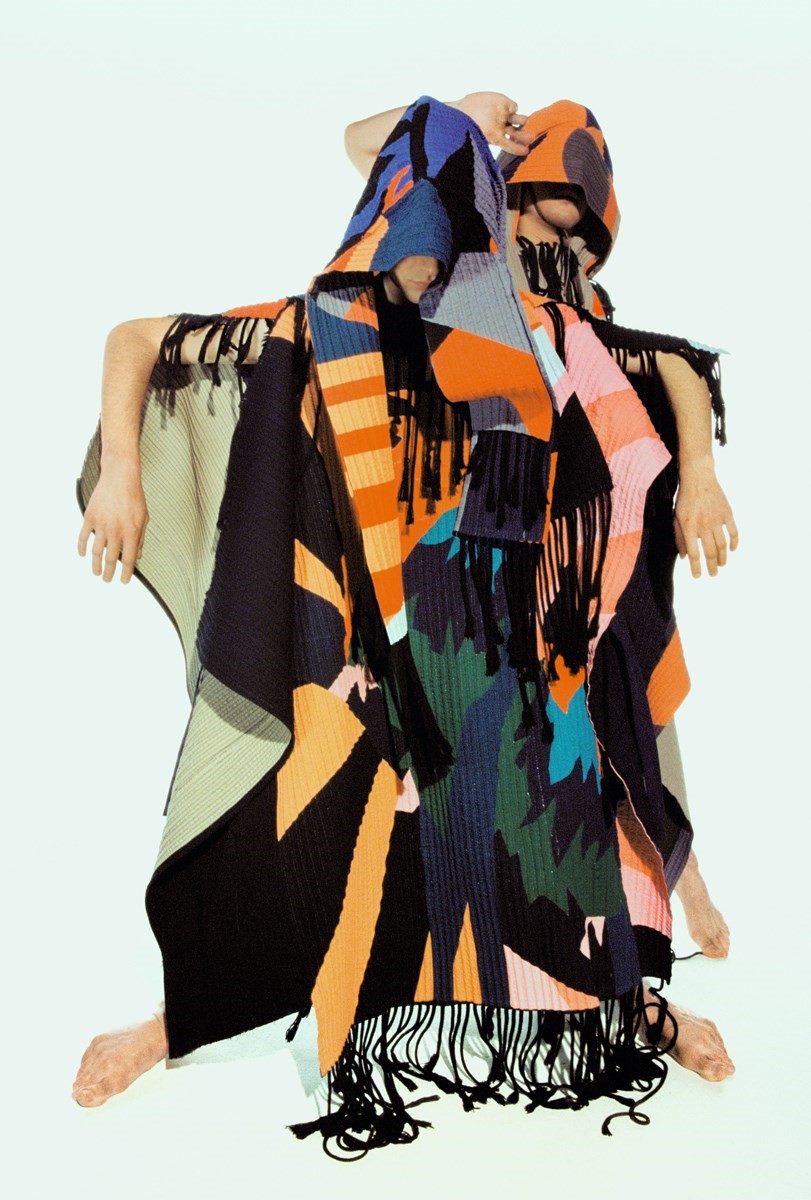
The third, our Spring/Summer 2019 show at Pitti, was about the future. I realise past, present and future sounds really naff, like an X-Men idea or something, but the man – our man – was first looking for validation in paradise, then looking for validation in objects and history, and lastly, realising that happiness is found within yourself or within another person. That’s where our ‘People’ sculptures came from – those talismans, of men, which resembled shadows or auras – they’re about the power of a person.
I love the idea of a talisman, believing that an object can protect you. The original The Wicker Man is my obsession, it’s the most amazing film. Putting power into a symbol or power into an object is such a strange thing to do. You can look at it in negative or positive ways: searching for meaning, or putting meaning into something to make you feel better. It relates back to uniform, again; of feeling as if you’re part of a group, a movement.
Uniform can be seen as oppressive, or removing individuality, but I think it’s a protective thing. At school, when you had non-uniform days, you could then judge everyone on how rich or poor they were. Before that, everyone was on an even playing field.
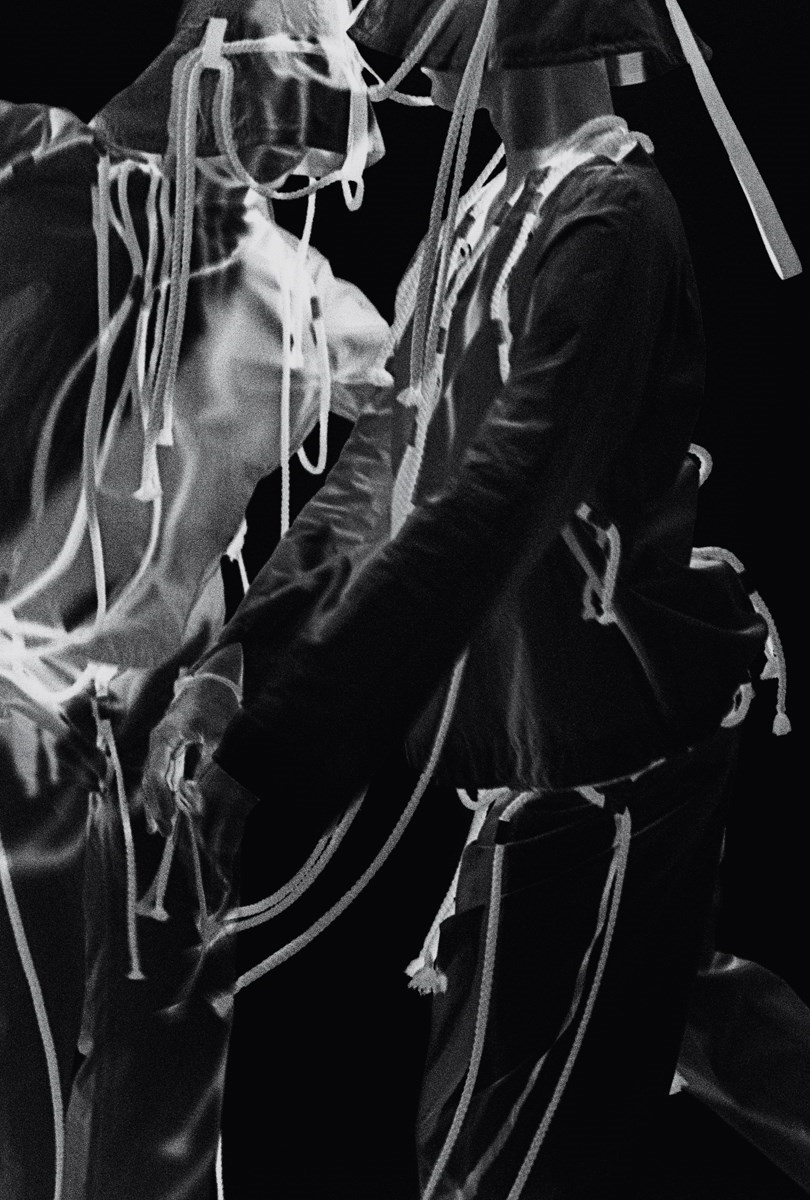

I feel that today, as the world becomes more globalised, people become more lonely. People are so connected, but the most lonely they have ever been. People are living through seeing, not living through doing. It’s also the death of subculture, there’s not time for anything to grow on its own.
It can be a positive: everyone being joined, everyone being everything. The original idea behind the Autumn/Winter 2019 collection was that: of everything becoming one; that everything could mean anything. But what does it then mean?
That’s why we liked the idea of the temporal, of fragility, of things not lasting forever. Blown glass, plastic that you throw away, porcelain patterns, the idea of money, which is so precious but it’s just made of paper. And the idea that it’s okay to be fragile, to be emotional; it doesn’t make you weak. Our men were at their most powerful when they were their most fragile.”
HAIR Naoki Komiya at Julian Watson Agency using Bumble & Bumble MAKE UP Anne Sophie Costa at D+V using MAC SET DESIGN Amy Stickland CASTING Noah Shelley MODELS Arun at Supa Model Management, Kaito at Rebel Management DANCERS Fraser Buchanan, Joshua White LIGHTING ASSISTANTS Benjamin Coppola, Liam Clarke STYLING ASSISTANTS Ioana Ivan, Marianne Kakko, Christelle Owona Nisin HAIR ASSISTANT Tom Arnett SET DESIGN ASSISTANTS Harry Stayt, Elliot Dodd PRODUCTION Webber
